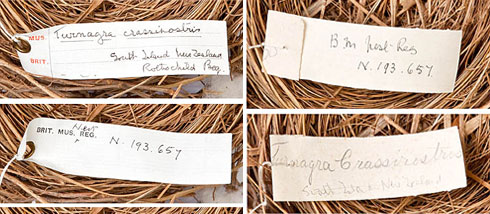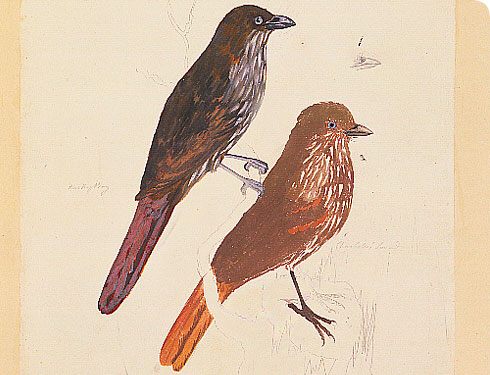Turnagra capensis (South Island or Stephens Island piopio)
The first recorded observation of the South Island piopio was by Johann Reinhold Forster (1729–1798) and his son Johann Georg Adam Forster (1754–1794) at Dusky Bay in South Island, New Zealand during Captain James Cook's second voyage. It was formally described in 1787 by Anders Sparrman.
The South Island or Stephens Island piopio, Tunagra capensis, is tragically 1of 58 bird species that have become extinct in the New Zealand biological archipelago since humans arrived in the 13th century (Tennyson and Martinson 2006).
When settlers first arrived, the piopio was a common bird, at least on the South Island. Like so many of its compatriots, the primary cause of the bird’s extinction was introduced predators like cats, dogs, brown rats, ferrets and weasels.
Species detail
-

Taxonomy
Uncertainty surrounds the evolutionary relationships and taxonomic placement of piopio, but recent studies have helped. Find out how.
-

Biology
Details of the piopio’s breeding and behavioural habits come from descriptions written in Victorian times. Find out what we know about these fearless birds.
-

Behaviour
The South Island piopio was notoriously tame and inquisitive, but also territorial and sometimes aggressive. Find out what else we know about this bird’s behaviour.
-

Extinction
Read on to find out what contributed to the piopio’s extinction.
-
References
Get reference material for Turnagra capensis.
Images

Turnagra capensis minor (J H Fleming, 1915) Stephens Island Piopio Collected from Stephens Island, New Zealand.

Turnagra capensis capensis (Sparrman, 1787) South Island Piopio, Collected from South Island New Zealand.

Turnagra capensis capensis (Sparrman, 1787) South Island Piopio, Collected from South Island New Zealand.

Watercolour painting by George Forster (1773) annotated 'Turdus crassirostris' and made during Captain James Cook's second voyage to explore the southern continent (1772–75).
© Natural History Museum, LondonAuthor
A word from the author
"The Natural History Museum holds 2 of the 6 known nests of the South Island piopio, and certainly the only examples outside New Zealand. These nests and others like them are particularly poignant - they are enduring expressions of behaviour which sadly cannot, and will not, ever be seen again."


